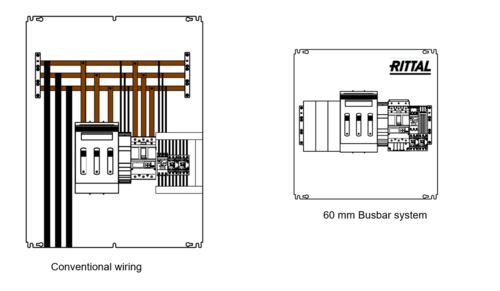
| Electrical installations |
|---|
| Wiring practice by region or country |
| Regulation of electrical installations |
| Cabling and accessories |
| Switching and protection devices |

Electrical busbar systems [1] (sometimes simply referred to as busbar systems) are a modular approach to electrical wiring, where instead of a standard cable wiring to every single electrical device, the electrical devices are mounted onto an adapter which is directly fitted to a current carrying busbar. [2] This modular approach is used in distribution boards, automation panels and other kinds of installation in an electrical enclosure. [3]
Contents
- Content & types of busbar systems
- Advantages and disadvantages over traditional electrical wiring
- Advantage
- Disadvantages
- See also
- References
Busbar systems are subject to safety standards for design and installation along with electrical enclosure according to IEC 61439-1 and vary between countries and regions. [4]

